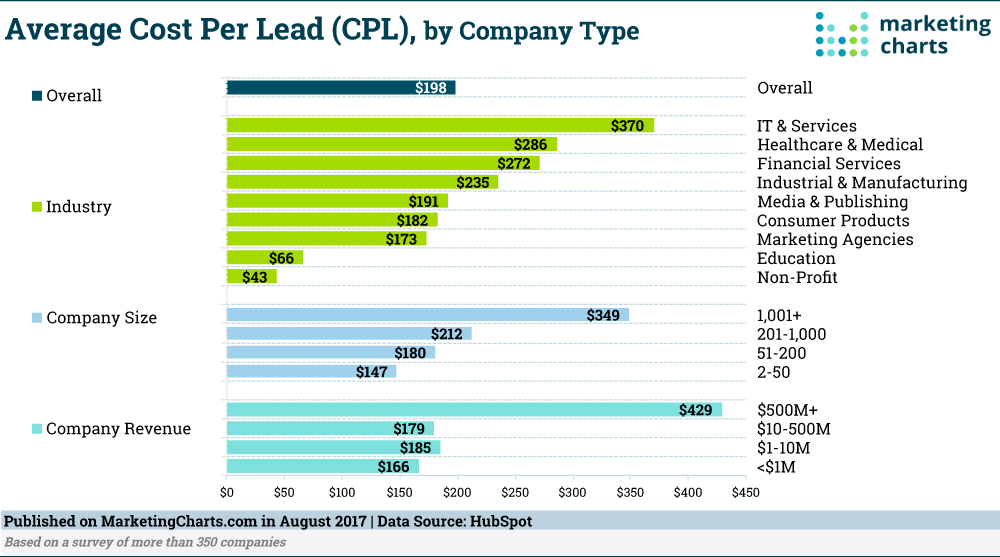Your industry’s cost per lead can be useful when determining how profitable your business is.
Although there are a ton of different metrics that you can measure to assess your business’ performance, Cost Per Lead (also known as CPL) is known as being the more in-depth metric of them all, as it calculates your cost per each user that submits info as opposed to Cost Per Click (CPC) or Cost Per Thousand (CPM), which generate more generalized information that is usually not as useful as CPL.
How to Calculate Cost Per Lead
Calculating your cost per lead isn’t complicated at all, as long as you know the total costs associated with your campaign.
Typically, your cost per lead is calculated by dividing the total cost of the campaign by the number of leads generated.
For example, if you spent $250,000 on a marketing campaign and got 1000 leads out of it, then your cost per lead is $250. To ensure your business is profitable, you’ll need to determine the value of these customers and compare it to your CPL, which will save you the mistake of running an unprofitable campaign.
Now, you may be asking, “what classifies as a lead?”
I’m glad you asked.
What’s a Lead?
A lead is any potential customer that has come to you as a result of your marketing efforts. What’s so special about a lead though, is that they include contact info, whereas with other types of marketing metrics you’d typically miss out on this information.
However, this doesn’t mean that all leads are the same. Some fall within your targeted audience, and some do not. However, typically it goes like this: the closer you get to your targeted audience, the more expensive the campaign gets. Don’t let that stop you from continuing though, as you’ll get a hefty return on your investment (given that everything else is done correctly) since these leads are narrowly targeted.
Good leads are those that have been verified to be in your target audience, either through questionnaires or case studies. However, someone who has no money can’t buy your product, which is why a good lead must also fall within your desired income level. And last but not least, good leads are also leads who have a desire and/or need for your product. As the need, income, and desire for the product is there when it comes to qualified leads, there’s a much higher chance of them converting (or in other words, purchasing a product) than normal leads.
Average Cost Per Lead By Industry
When running a marketing campaign, it’s important to know whether or not the cost of running it is worth the return, and whether or not you’re getting ripped off when paying for your leads. Knowing the average cost per lead of your industry can help avoid both of these common issues.
Marketing Charts did a study in 2017 about the average cost per lead by industry. Here’s their chart, which illustrates the average cost per lead across 9 different industries:

As you can see, costs per lead can vary from as little as $43 to $429 depending on the industry you’re in. If you’re seeing costs per lead higher than the industry average, it may be worth it explore different search terms to bid on—that way, you can get the best bang for your buck.





